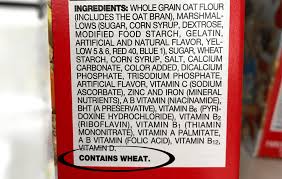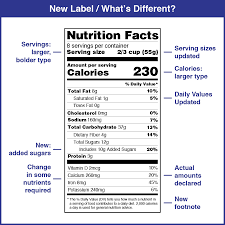
The Ultimate Mastering Labels Guide to What You Need to Know for Safety and Accuracy
Mastering the art of reading labels is crucial for informed consumer choices. Labels serve as gateways to understanding the products we use, and this comprehensive guide aims to empower you with the skills needed to navigate through the intricate language found on labels. Whether it’s decoding ingredients, understanding certifications, or being allergy-aware, our journey into mastering labels will equip you with the knowledge for a healthier and more conscious lifestyle. Welcome to the realm of informed choices through mastering labels!

In today’s fast-paced world, consumers are increasingly becoming conscious of the products they use, focusing on making informed choices for a healthier and more sustainable lifestyle. One essential skill in this journey is the ability to decipher product labels accurately.
Labels were designed to provide the consumer with a detailed list of products being ingested or utilized, so that they can make healthy choices. They contain information such as ingredients, warnings, nutritional facts, expiration dates, instructions, etc.
Understanding the Basics: Start by familiarizing yourself with common terms such as “organic,” “non-GMO,” and “fair trade.” Different certifications and seals indicate a product’s adherence to specific standards. Understand the meanings behind symbols like USDA Organic, Fair Trade, and Non-GMO Project Verified to align your purchases with your values. Understanding these terms will lay the groundwork for interpreting more complex labels.
- Organic Label: Ensuring Pure, Chemical-Free Goodness
- Non-GMO Certification: Embracing Genetic Modification Transparency
- Fair Trade Seal: Supporting Ethical Practices and Global Equality
- USDA (United States Department of Agriculture) Organic Certification: The Gold Standard for Organic Integrity
Ingredient List Deconstructed: Learn to identify the main ingredients by checking their order on the list. Manufacturers list ingredients in descending order by quantity, allowing you to gauge the primary components of the product.
Nutritional Information: Serving size awareness: Many consumers overlook the serving size, which can significantly impact the nutritional content. Be sure to compare the serving size with your typical portion to make accurate assessments.
Spotting Red Flags like Additives and Preservatives: Identify common additives and preservatives that might be harmful or trigger allergies. Familiarize yourself with E-numbers and other codes used to represent these substances.
Allergen Warnings: Locate and comprehend allergen warnings to ensure the product is safe for your consumption or to meet specific dietary needs.
Sustainability and Eco-Friendly Labels: Look for labels indicating sustainable and environmentally friendly practices, such as Forest Stewardship Council (FSC) certification for paper products or the recycling symbol.
Country of Origin: The country of origin can impact the quality and safety of a product. Understand the significance of this information and how it relates to your preferences.
Expiration Dates and Batch Codes: Learn to interpret expiration dates and batch codes to ensure you’re purchasing products at their peak freshness.
Let’s break down the key components found on food labels, unraveling the mystery behind the numbers and terms.

1. Serving Size: The serving size is the recommended portion of the food, and all nutritional information on the label is based on this serving size. Pay attention to this to accurately assess the nutritional content of what you’re consuming.
2. Calories: This indicates the amount of energy provided by the food. Be mindful of your daily caloric intake and how the serving size fits into your overall diet.
3. Nutrients:
- Fat: Check total fat, saturated fat, and trans-fat. Aim for lower saturated and trans-fat intake.
- Cholesterol: Keep an eye on cholesterol levels, especially if you’re managing heart health.
- Sodium: Monitor sodium content, particularly if you’re watching your blood pressure.
4. Carbohydrates:
- Dietary Fiber: Essential for digestive health, choose foods with higher fiber content.
- Sugars: Differentiate between natural and added sugars. Minimize added sugar intake for a healthier diet.
5. Proteins: Protein is crucial for muscle maintenance and overall body function. Ensure an adequate protein intake based on your dietary needs.
6. Vitamins and Minerals: Food labels often highlight the percentage of daily recommended intake for essential vitamins and minerals. Use this information to balance your nutrient intake.
7. Ingredient List: Ingredients are listed in descending order by weight. Be aware of additives, preservatives, and potential allergens. Choose products with simpler, wholesome ingredients.
8. Allergen Information: Manufacturers must highlight common allergens present in the product. Check for allergen warnings to ensure the food is safe for your consumption.
9. % Daily Value (%DV): This indicates how much a nutrient in a serving contributes to a daily diet. Use %DV to assess if a food is high or low in a particular nutrient.
Make it a habit to read labels particularly on medication and food labels. Pay attention to instructions on the containers or packages. By ignoring the various signs and instructions, one can miss out on pertinent information which may save one’s life. Equipping yourself with the knowledge to read and understand product labels is an essential step towards making informed and conscious consumer choices. By mastering this skill, you’ll not only contribute to your well-being but also support products and practices that align with your values. Happy label reading!
Disclaimer: The information provided in this content is for general informational purposes only. It is not intended as medical or healthcare advice, diagnosis, or treatment. Always seek the advice of a qualified healthcare professional with any questions you may have regarding a medical condition or healthcare decisions.


